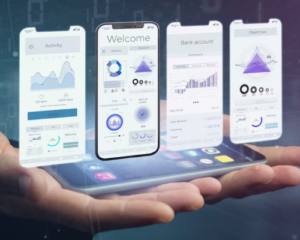
Introduction to Web and Mobile Development

Introduction:
In today’s fast-paced digital era, web and mobile development have become indispensable components of our everyday lives. They drive the functionality and interactivity of websites, applications, and other digital platforms. In this article, we will provide an overview of web and mobile development, explore their differences, and highlight their significance in shaping the modern digital landscape.
Understanding Web Development:
Web development involves the creation and maintenance of websites and web applications. It encompasses various technologies and coding languages such as HTML, CSS, and JavaScript. Web developers focus on designing, coding, and implementing the front-end (user interface and user experience) and back-end (server-side logic and database management) components of a website. They ensure responsiveness, compatibility across different browsers, and optimal performance
Key Aspects of Web Development:
Front-end Development: Front-end developers are responsible for crafting the visual elements and user experience of a website. They work with HTML, CSS, and JavaScript frameworks to create interactive interfaces that engage users.
Back-end Development: Back-end developers focus on the server-side of web applications, managing databases, handling user authentication, and implementing complex business logic. They work with programming languages like Python, Ruby, PHP, or JavaScript (with Node.js) to build the logic that powers the website or application.
Understanding Mobile Development:
Mobile development refers to the creation of applications specifically designed to run on mobile devices such as smartphones and tablets. It involves developing applications for platforms like iOS (Apple) or Android (Google). Mobile developers use specialized programming languages and frameworks like Swift or Objective-C for iOS, and Java or Kotlin for Android, to create apps that leverage the unique capabilities of mobile devices.
Key Aspects of Mobile Development:
Native App Development: Native app development involves building applications specifically for a particular mobile platform (iOS or Android) using platform-specific programming languages. Native apps offer high performance and full access to device features but require separate development efforts for each platform.
Cross-platform App Development: Cross-platform app development allows developers to create apps that can run on multiple platforms using frameworks like React Native or Flutter. These frameworks enable code sharing across platforms, reducing development time and cost. However, they may have limitations in accessing certain device features or performance optimization.
Significance of Web and Mobile Development:
Enhanced User Experience: Web and mobile development play a vital role in enhancing user experience by creating intuitive interfaces, seamless navigation, and responsive designs. They enable businesses to engage users effectively and provide a positive interaction with their products or services.
Business Growth and Reach: A strong online presence is crucial for businesses in the digital age. Web and mobile development enable companies to extend their reach, attract customers, and drive business growth. They facilitate e-commerce, online booking systems, and customer engagement, helping businesses stay competitive.
Accessibility and Convenience: Web and mobile applications bring convenience to users’ fingertips. They enable access to information, services, and entertainment anytime, anywhere. Whether it’s booking a ride, ordering food, or accessing educational resources, web and mobile development have transformed how we interact with the digital world.
Technological Innovation: Web and mobile development continue to evolve with emerging technologies. From responsive design and progressive web apps to augmented reality and Internet of Things (IoT) integrations, developers are constantly pushing boundaries and introducing new possibilities for digital experiences.
Conclusion:
Web and mobile development are vital components of the digital landscape, enabling businesses and individuals to connect, engage, and thrive in today’s interconnected world. They offer unique opportunities for innovation, user engagement, and business growth. Understanding the differences between web and mobile development helps in selecting the appropriate approach for specific projects. Embracing these disciplines opens the door to endless possibilities and empowers businesses and individuals to harness the full potential of the digital age. Whether it’s creating captivating websites, developing user-friendly mobile applications, or integrating cutting-edge technologies, web and mobile development empower us to navigate the ever-evolving digital landscape with confidence and creativity. So, whether you’re a business owner looking to expand your online presence or a developer seeking to shape the future of technology, embracing web and mobile development is the key to unlocking limitless possibilities in the digital realm.





